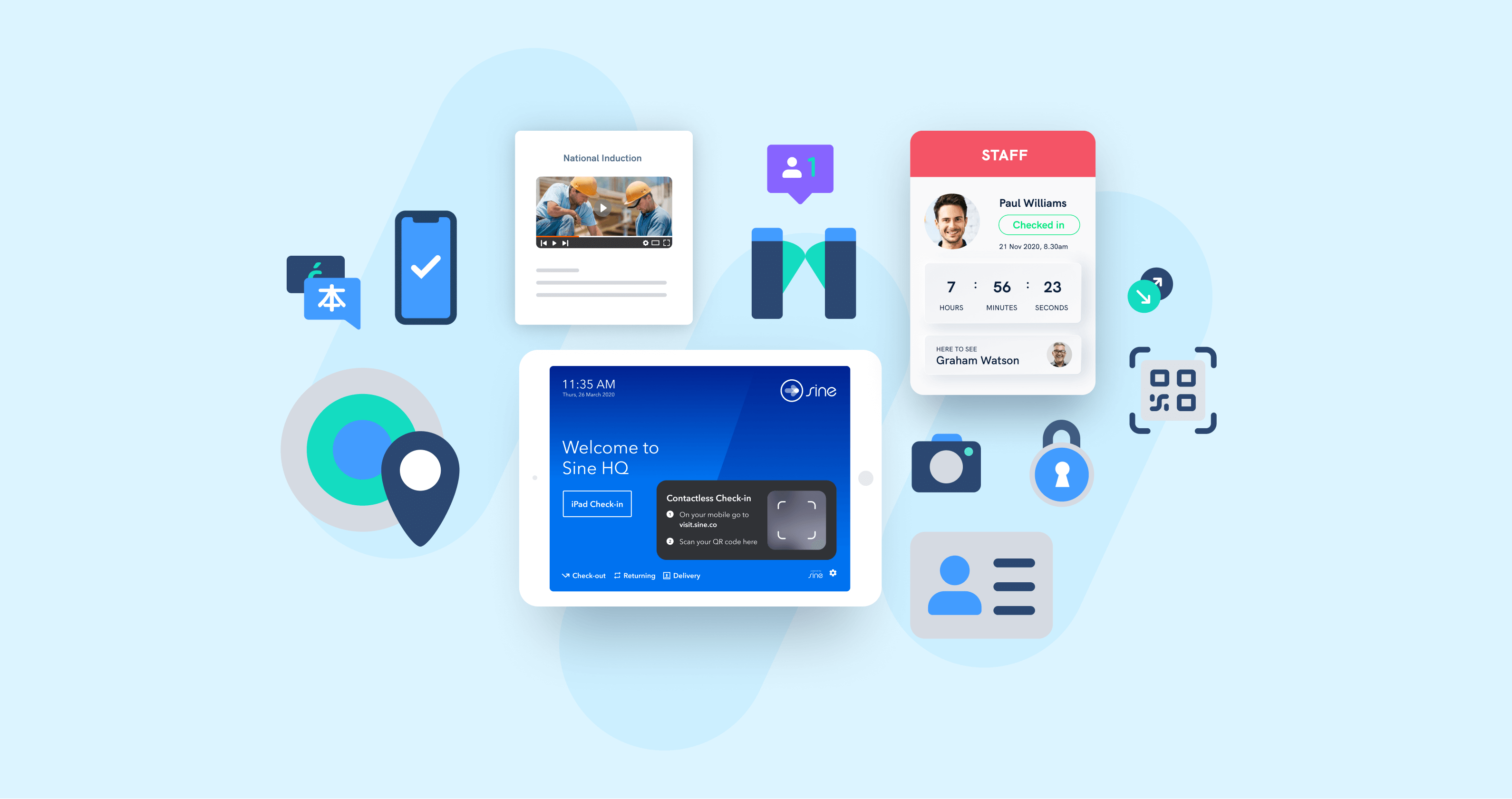
By: Sheeladitya Karmakar, Honeywell Building Technologies
Note: This article originally appeared on TotalSecurityAdvisor.com in November 2021.
When the pandemic disrupted most facets of life as we knew it, it also accelerated a shift in visitor management (VM) to a more frictionless―and especially touchless―experience. For many companies and organizations, VM is a cumbersome manual process, with security personnel maintaining a physical entry log in which visitors would fill out a paper form to receive building access. In addition to general pain points of maintaining manual logs, it posed potential security risks when someone forgot to return an access card.

Today, the process is becoming more streamlined, not only for facilities but for end users as well. When I’m visiting a building, I often already know which floor I’m going to because I’ve filled out a digital form prior to arrival. That form has granted me building access for a specified time period, so when I get there, I don’t have to meet with security. I can check in at a kiosk using my ID, phone, or sometimes just my physical self as proof of identity. With a fully digital process, facility staff know when I’m checking in and out, so they can efficiently manage my access.
This kind of seamless capability can provide even further benefit. Say an employee tests positive for the COVID-19 virus: The VM tool provides an accurate record of when and how long that individual was last on site. They can then determine who might need to be notified of any potential exposure, thus avoiding unnecessary quarantines. Additionally, VM software has the capability to add a layer of pre-screening to the check-in process, such as confirming COVID-19 vaccination status or showing proof of a negative COVID-19 test ahead of arrival. Pre-arrival screening can greatly reduce the chance of exposures to make people’s environments safer and healthier.
From a security standpoint, a digital VM system, when paired with the enterprise access control system, allows critical infrastructure and other secured facilities to allow only personnel with the appropriate clearance level to enter a particular job site―while also ensuring the right people have easy access. A power-generating station, for example, must maintain strict access control over both its control room and physical plant, but on-site security guards are sometimes humanly fallible and costly to staff. A VM system can help to pre-register visitors while the access control system helps enable compliance to company and regulatory procedures.
Digitization also offers another benefit―a new level of analytics and reporting. Insight into how many visitors a building can handle or expect at a given time on a particular day is difficult to obtain without a digital VM system and occupancy sensors. Now that many facilities are managing social distancing and occupancy restrictions, preregistering visitors and tracking occupancy patterns can help provide greater insight.
As VM technology continues to evolve, customers are favoring a more holistic management solution that easily integrates with existing, third-party systems. It not only reduces their costs―they won’t need personnel to manage the visitor desk 24/7―but also provides visitors with a seamless end-to-end experience. VM technology now spans the entire user experience, not just checking-in and checking-out. It starts even before visitors park their cars and ends when they leave the lot.
An open ecosystem also allows the users to tailor the VM system to their needs, which might include access control for elevators, parking systems, cafeterias, or all of the above. Our world is swiftly becoming a more integrated place, and as live, work, and play communities grow in popularity globally, users want a streamlined, single-access card for all facilities within them. An open-ecosystem partner will help future-proof your solutions.
A case in point: The security of hospital environments is critical. Secure access control is essential, but so are unobstructed workflows and treatments. The process must be as frictionless and touchless as possible for doctors, patients, visitors, and contractors.
At the same time, few other facilities pose the same occupancy challenges as a hospital, where a wide range of occupants are constantly in motion and inefficiencies can have grave results. A doctor or nurse, for example, needs access to an operating room―while denial of OR access to visitors must be ensured. Similarly, hospital staff must have access to the building at all hours, while visitors are restricted to certain hours. Contractors may need access to basement or roof spaces, and so on.
A modern VM system, when paired with the hospital’s access control system, can provide the right access to the right people at the right time. It can help enable facility and security managers to track visitors and employees, analyze occupancy rates and traffic patterns, and create reports that can help the leadership team improve workflow efficiencies and outcomes.
While providing a complete, centralized record of visitor traffic, a VM system can also help improve productivity and service to your customers.
The more we can leverage technology and the intelligence that we can derive from that, the more we can improve a frictionless and operationally efficient, and effective building environment that goes way beyond pandemic concerns.
According to Jason Ouellette, Director of Technology & Business Innovation for Access Control and Video Solutions at Johnson Controls, this leads to smart buildings, smart campuses, smart cities, and more. They can enable a building to meet the needs of its occupants, allowing the businesses within it to focus more on their core mission.
“For example, when the last person exits the conference room, the building is aware that no other meetings are scheduled for the next few hours, so the building management system automatically locks the room and adjusts the lighting and temperature to “vacant” mode,” Oullette said. “UV disinfection technology is used to clean the conference room, and the room’s AV and other electronic equipment are automatically placed in standby mode, providing for energy conservation while ensuring a healthy work environment.”
The management can even track the movement of people to analyze more specific needs. For instance, potential cafeteria demand for food management as well as building configuration and safety compliance needs. All of this contributes to saving time, money, and resources, allowing an organization to reinvest more in what makes them more successful.
Reducing or eliminating parking barriers and ticketing machines can positively impact staffing levels within commercial buildings, as they drastically minimize hardware purchases and maintenance costs. According to Casey Rawlins, Technical Solutions Consultant at Security and Safety Things, less hardware also means lower chances of credential theft or damage.
“Another example of incorporating touchless solutions into your buildings is to provide a way for visitors or guests to offer visual feedback onsite,” Rawlins added. “For example, if visitors are attending an event at a large stadium, they can be encouraged to offer feedback with common hand gestures, such as a thumb up, neutral, or down and the video analytic application will evaluate accordingly.”
This offers a safe and hygienic way to gather feedback from guests – without extra touchpoints. Furthermore, touchless technology can create barrier-free environments, ultimately allowing those with disabilities to enter and navigate buildings more efficiently.
Touchless solutions may not go away even after the pandemic recedes. Many customers have already made significant investments in this, and manufacturers are focusing their R&D in this direction.
To sum up, there are three major benefits of using touchless solutions even after the pandemic:
Sheeladitya Karmakar is Security Global Offering Leader at Honeywell Building Technologies.